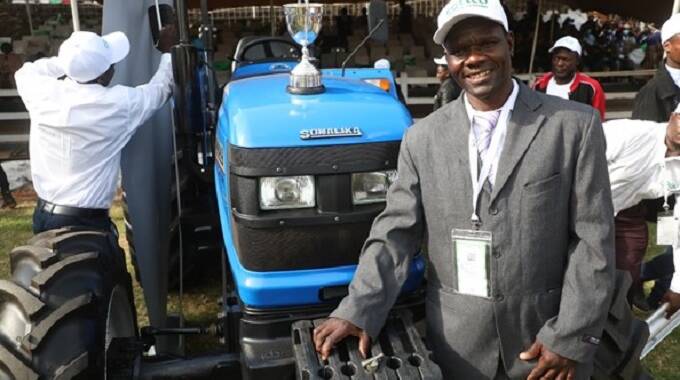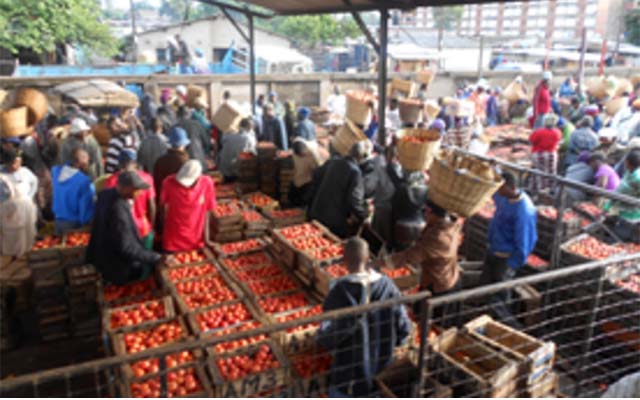‘Cotton not a poor man’s crop’

Edgar Vhera Agriculture Specialist Writer
IN a development that amplifies Government’s call for farmers in the country’s different agro-ecological regions to grow crops suitable for their climatic and soil conditions, a Gokwe farmer chose to grow cotton and scooped the ‘grower of the year’ award.
Cotton does well in dry regions that do not receive lots of rain, with Gokwe incidentally situated in Natural Region 4 where are low rainfall patterns.
The farmer, Smart Kambanje recently told The Herald that he followed extension officers’ advice the choice of crops for his dry region, which helped him score high yields.
“Good agronomic practices, use of the right varieties, cognisance of the soil properties as well as doing operations timely helped me produce high yields. I used both imported hybrids and improved local cotton seeds,” said Kambanje.
Gokwe’s land resource productivity as dictated by climate, soil and landform conditions as modified by the use and management of the land demonstrates its cotton production prowess.
Kambanje’s story typifies the proverbial rags to riches narratives especially after starting off by doing menial jobs such as weeding on other people’s fields (maricho) before building a modern house and purchasing a grinding mill. He now owns a tractor.
“It all started in 2016 when I planted the local cotton variety SZ9314 and managed to get 37 bales of seed cotton from two hectares. That year seed cotton was bought at a high price of US$1 per kg and I managed to build a house and bought a grinding mill. It was the year that changed my lifestyle, as I graduated from the menial to managing my own farming ventures,” he observed.
Though many are of the view that productivity rests in planting imported hybrid cotton seed, he believes that it is more of good agronomic practices than anything else.
“I observed that there was not much difference in the yield between the imported Mahyco hybrid and local variety SZ9314 with the former producing 4 560 kg while the latter had 4 006 kg. If anything, I noticed that the balls from the local variety were heavier at about 5 grammes compared to those for the hybrid that weighed around 3 grammes,” continued Kambanje.
To boost the performance of his crop, he followed methods that did not promote competition for sunlight among plants and employed the split fertiliser application technic for top-dressing fertiliser.
Cotton Research Institute (CRI) head Mr Washington Mubvekeri concurred on good agronomic practices saying it was crucial to grow cotton in the right agro-ecological region and use hybrid seed, plant early, manage weeds and pests, adhere to prescribed plant populations and provide adequate nutrition among others things to boost yields.
Said Mr Mubvekeri: “Over the years CRI played a key role in Zimbabwe’s cotton production sector through development and sustained release of locally adapted cotton varieties with progressively higher yields, better lint quality and improved tolerance to pests and major diseases. Zimbabwe like more than 99 percent of cotton producing countries of the world, including top producing countries such as USA, China, Australia, Pakistan, and Brazil have been developing and commercialising varieties as opposed to hybrids.”
Zimbabwe Textiles Manufacturers Association chairman Mr Admire Masenda agreed that it was possible to remove that negative tag put on cotton farmers if all players within the cotton-to-clothing value chain were to pull in one direction from production to marketing of value-added products.
“Sustainable production and economic empowerment for cotton farmers can be achieved if all value chain actors play their role from research, extension, production, input and output markets all supported by enabling Government policy. Cotton farmers, with organisation, can be involved in upstream activities of toll ginning thereby earning high returns,” said Mr Masenda recently.
The old practice of paying for seed cotton with grocery at one time has since been replaced by on spot US$ cash payment this season
As further good news for the cotton industry, the resuscitation of the biggest fabric producer of yesteryear, David Whitehead Textile in Chegutu under a US$20 million facility recently, is surely going to bring back good memories of the past.
Zimbabwe Textile Workers Union (ZTWU) secretary general Mr Norman Makono was optimistic the initiative was setting the tone for good things to come that other players of old should ride on to resuscitate their operations for the benefit of the country.








Comments